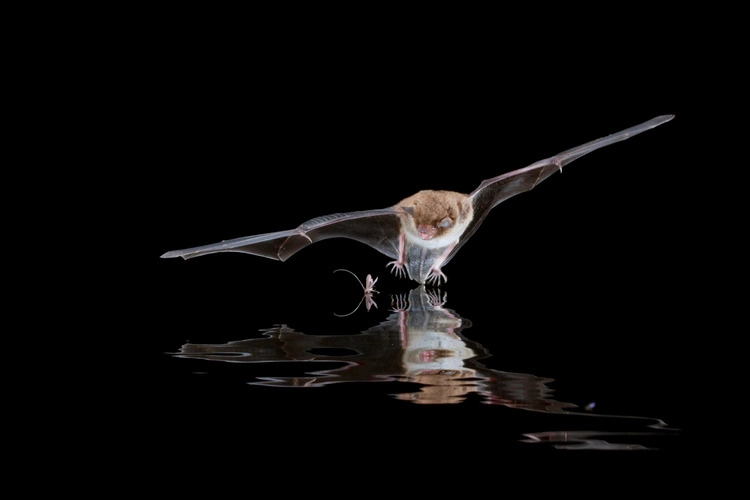
As beavers are reintroduced across England and Wales, bats benefit from the animals’ ability to vastly change landscapes and their surroundings
By
In England and Wales, the reintroduction of beavers in wetlands is leading to an increase in bat activity – in particular amongst the Barbastella barbastellus species – with a reported 393 per cent uptick in activity, a study by UWE Bristol has found.
The study – believed to be the first to evidence of positive relationship of this kind between bats and beavers – discovered that bat movements in beaver enclosures was significantly higher than those without beavers, after closely monitoring eight bat species across 12 fenced-off beaver reintroduction enclosures.
Researchers deployed acoustic monitoring in 2022 between June and September – the peak period of bat activity in the UK – with each monitoring period lasting for seven nights. Altogether, 144,548 ‘bat passes’ were recorded over 83 nights, with some bat species observed having endangered or threatened status in the UK.

When reintroduced to an environment, beavers are able to change its landscape: altering the flow of water, and the type of plants and animals that are present. Building dams allows beavers to slow down water flow, preventing flooding, trapping sediment and nutrients, and store water for prolonged dry periods. And for bats – which depend on freshwater ecosystems such as wetlands for drinking water, as well as foraging resources – the beaver’s behaviour is extremely beneficial.
‘The importance of freshwater ecosystems for bats cannot be understated,’ said the study’s lead author, Jack Hooke. ‘The management of wetland networks is critical for the conservation of bat populations.’
In Great Britain, the European beaver was wiped from the landscape over 400 years ago due to being heavily hunted for their fur and scent glands that produce castoreum, used for food flavourings and perfume. Reintroductions are now allowing for a clear understanding of the significant role beavers play in modifying their local environment, not just for bats, but for many other species too. For example, coppicing by beavers allows light to enter lower levels, creating vegetation which breeding birds can feed on. The animals can also help reduce flooding for humans too: making metres-high damns from branches and vegetation.
‘Previously, human interventions have been attempted to restore these ecosystems but beavers are proving to be a more successful nature-based solution.’




